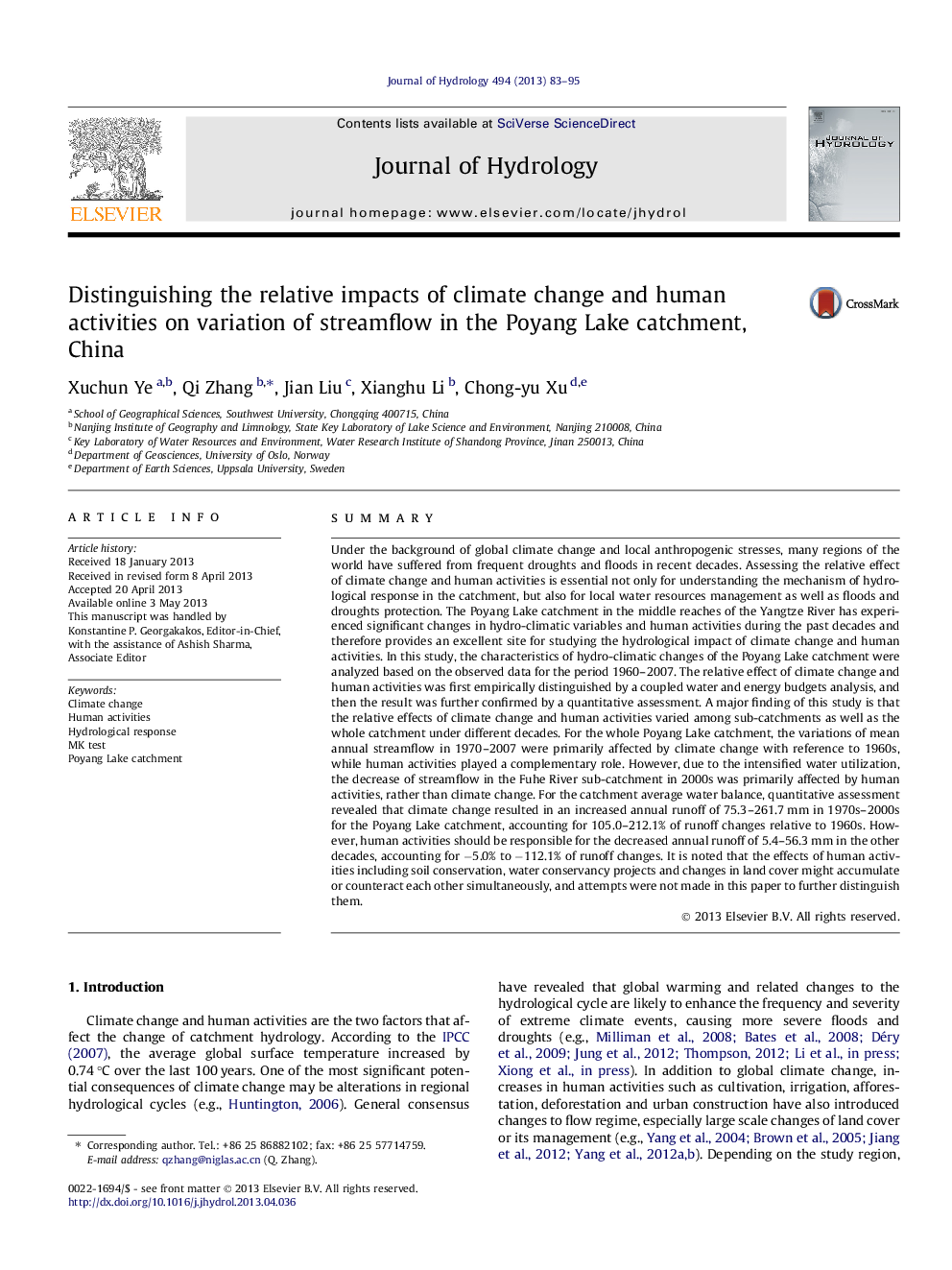| کد مقاله | کد نشریه | سال انتشار | مقاله انگلیسی | نسخه تمام متن |
|---|---|---|---|---|
| 6413761 | 1629954 | 2013 | 13 صفحه PDF | دانلود رایگان |

- We examined the long-term hydro-climatic changes of the Poyang Lake catchment.
- We investigated the relative impacts of climate change and human activities.
- Relative effects varied among sub-catchments under different decades.
- Increased catchment streamflow was mainly affected by climate variability.
- Comprehensive effect of specific human activities led to a decrease of streamflow.
SummaryUnder the background of global climate change and local anthropogenic stresses, many regions of the world have suffered from frequent droughts and floods in recent decades. Assessing the relative effect of climate change and human activities is essential not only for understanding the mechanism of hydrological response in the catchment, but also for local water resources management as well as floods and droughts protection. The Poyang Lake catchment in the middle reaches of the Yangtze River has experienced significant changes in hydro-climatic variables and human activities during the past decades and therefore provides an excellent site for studying the hydrological impact of climate change and human activities. In this study, the characteristics of hydro-climatic changes of the Poyang Lake catchment were analyzed based on the observed data for the period 1960-2007. The relative effect of climate change and human activities was first empirically distinguished by a coupled water and energy budgets analysis, and then the result was further confirmed by a quantitative assessment. A major finding of this study is that the relative effects of climate change and human activities varied among sub-catchments as well as the whole catchment under different decades. For the whole Poyang Lake catchment, the variations of mean annual streamflow in 1970-2007 were primarily affected by climate change with reference to 1960s, while human activities played a complementary role. However, due to the intensified water utilization, the decrease of streamflow in the Fuhe River sub-catchment in 2000s was primarily affected by human activities, rather than climate change. For the catchment average water balance, quantitative assessment revealed that climate change resulted in an increased annual runoff of 75.3-261.7Â mm in 1970s-2000s for the Poyang Lake catchment, accounting for 105.0-212.1% of runoff changes relative to 1960s. However, human activities should be responsible for the decreased annual runoff of 5.4-56.3Â mm in the other decades, accounting for â5.0% to â112.1% of runoff changes. It is noted that the effects of human activities including soil conservation, water conservancy projects and changes in land cover might accumulate or counteract each other simultaneously, and attempts were not made in this paper to further distinguish them.
Journal: Journal of Hydrology - Volume 494, 28 June 2013, Pages 83-95